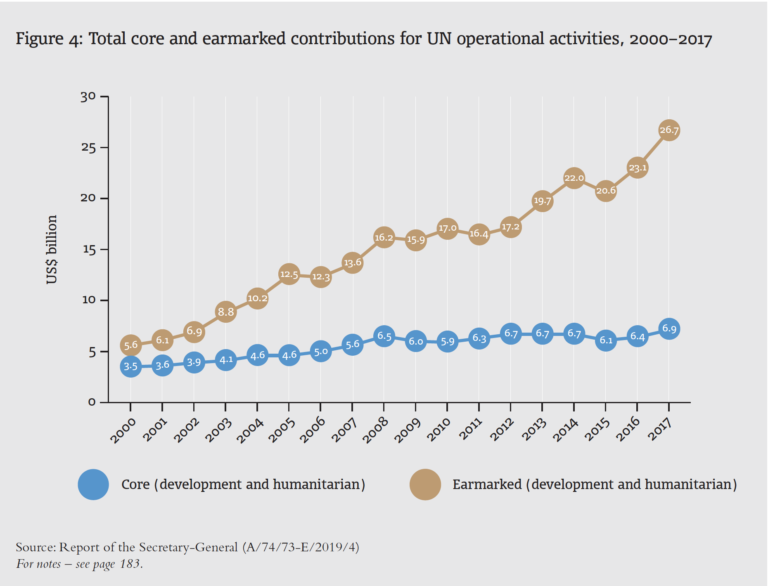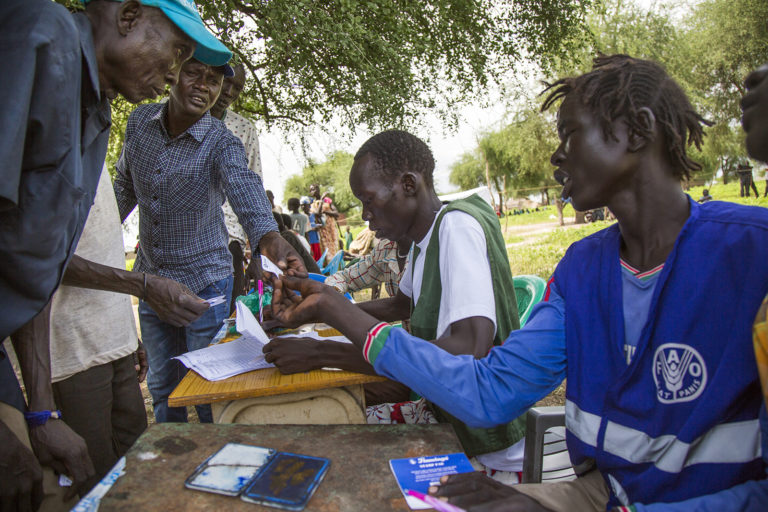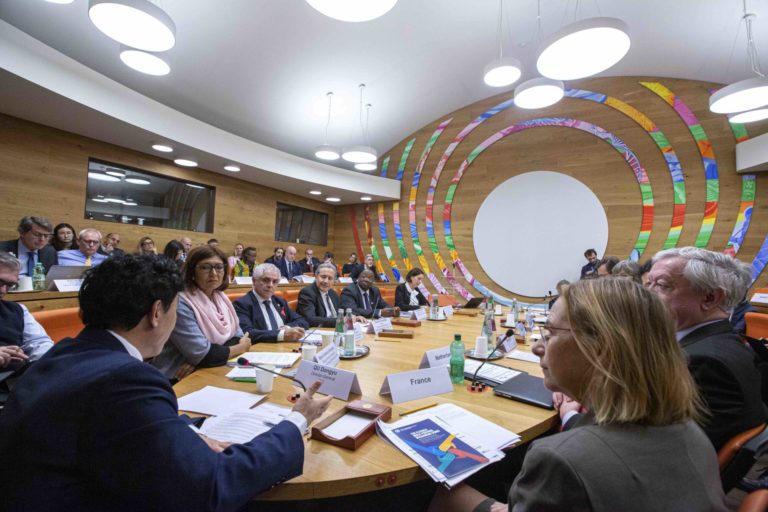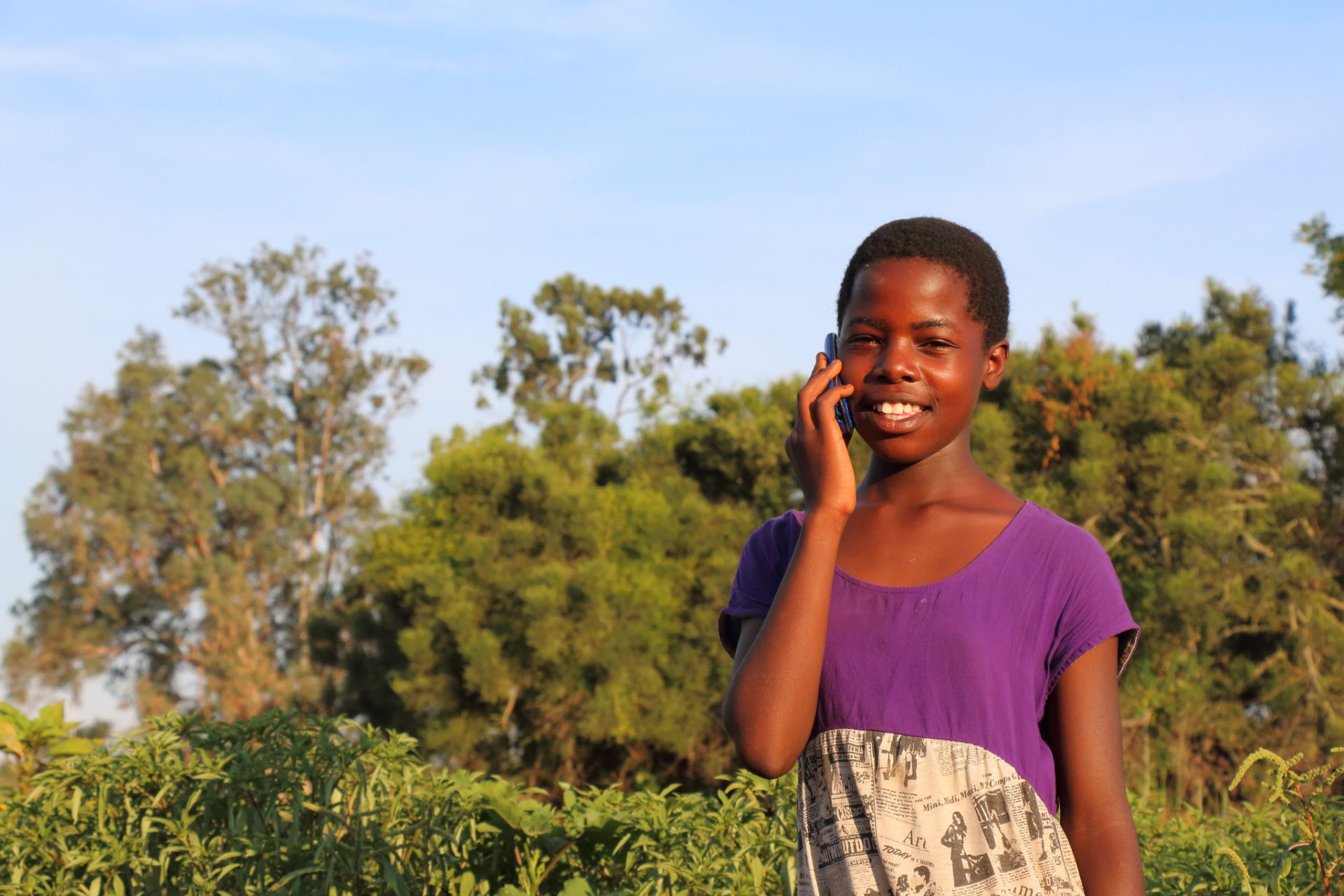SERIES TITLE: Pipe dream or achievable vision: How can we deliver on the 2030 Agenda? The 2030 Agenda foresees a bright future for humanity, one in which everyone enjoys peace and prosperity on a bountiful planet. But, with nationalism, populism and protectionism on the rise, how can we deliver on this utopian vision? This series of articles looks at what the international development system needs to do to deliver on this incredibly complex task – from rebuilding trust in multilateralism to bringing in the trillions of dollars needed each year to finance change. The first article of the series can be found here.
Why Flexible, Integrated Financing Could Be a Game-Changer in Achieving the SDGs
Let’s get straight to the point: despite decades of development efforts and thousands of aid actors around the world, the picture looks grim. According to the UN Report of the Secretary-General on SDG Progress 2019, extreme poverty is expected to be 6% in 2030, hunger has been on the rise for the past three years, biodiversity is in extreme decline, and greenhouse gas emissions continue to rise. The kicker? As UN Secretary-General António Guterres writes, “Institutions are not strong or effective enough to respond adequately to these massive interrelated and cross-border challenges.”
There has never been a better — or more pressing — time for the UN to look into the mirror and rethink the pathways it will take to greater efficacy, speed, and sustainable results on the ground. The current UN development system (UNDS) reform, which was mandated in May 2018 by all Member States, is promising sweeping changes that are in effect a new business model for the system. The reform entails extensive transformations at the global, regional and country level with the goal of strengthening the UN’s reliability, cohesiveness, accountability, and above all efficacy as a partner to countries in the 2030 Sustainable Development Agenda.
Central to the UNDS reform is an element of reciprocity. In fact, this is perhaps the most standout feature of the overhaul: the changes required are not just internal to the UN institutions, they also necessitate a commitment from their Member States to change the way they provide their funding. This commitment takes the form of a funding compact that the UN proclaims will enable “a shift in donor funding towards more predictable and flexible resources, that allow, in turn, the UN development system to tailor its support.”
Just as economic or political stability combined with freedom helps both individuals and societies thrive, reliable financing that gives more freedom for allocation decisions is vital for the UNDS to do its best work, particularly when it comes to achieving long-term interconnected goals.
In other words, in order for the UN to significantly — and dare I say drastically? — step up its impact to meet the goals of the 2030 Agenda, the UNDS and its donors need to build and expand a steady yet nimble financial base that can serve as a launching pad for greater adaptability and results-driven action. Just as economic or political stability combined with freedom helps both individuals and societies thrive, reliable financing that gives more freedom for allocation decisions is vital for the UNDS to do its best work, particularly when it comes to achieving long-term interconnected goals.
The Drawbacks of Earmarked Funding
Before showing an example of how predictable and flexible funding has both been effective in the past and could lead to a more nimble and impactful UN development future, let us look at the current trends the UNDS reform is trying to reverse.
Over the past decades, rapid growth in earmarked contributions (i.e., voluntary funds designated for use on a specific programme or project) has characterized the financing of the entire UNDS. For instance, since 2002, core-funding (i.e., flexible un-earmarked contributions) has increased by 23%, while non-core funding that is heavily earmarked has increased by 150% in real terms. By 2013, the imbalance had reached an extreme, with non-core resources accounting for some 75% of total UNDS resources.

Earmarked funds take a variety of forms that can range from extremely customized, donor-driven projects, to broader yet conditional programme support. Though the pros and cons vary depending on the degree of earmarking, the overall trend of earmarked funding is that it is often somewhat shortsighted, inconsistent, and burdened by transaction fees.
As a UNDS article by Max-Otto Baumann, Erik Lundsgaarde and Silke Weinlich explains: “Earmarked funding tends to be short-term, and this generates a trend towards low-hanging fruits rather than addressing complex socio-economic challenges in the spirit of sustainability… it creates an extreme donor-orientation in all phases of the programming and implementation process (‘tunnel vision’, ‘tyranny of the urgent’), which may undermine development effectiveness.” Adding salt to the wound, this donor-oriented approach also results in fragmentation, competition, slow and dispersed decision-making, and unnecessary opacity.
Instead of problem solving in a dispersed and reactive way that leaves us chasing after solutions yet falling ever further behind on our global goals, we need to consolidate our efforts in strategic, multilateral offensives that rein in the urgency and improve circumstances both now and in the long run.
In fact, the extreme growth in earmarked contributions to the UNDS creates the absurd situation where large amounts of well-intended funding may lead to the over-funding of short-term “donor darlings” and leave “less attractive” projects vastly behind, despite their being critical for achieving the long-term development goals. Yes, today’s global challenges are urgent, but the above-mentioned “tyranny of the urgent” should not dictate development spending. Instead of problem solving in a dispersed and reactive way that leaves us chasing after solutions yet falling ever further behind on our global goals, we need to consolidate our efforts in strategic, multilateral offensives that rein in the urgency and improve circumstances both now and in the long run. Simply put, the 2030 Sustainable Development Agenda calls for integrated, global actions for our integrated, global goals. The UNDS reform is thus a call to the UN’s Member States to put the money where their mouth is.
The Stability of Flexibility and Vice Versa
In the UNDS, flexible funding can come in several forms. First of all, it can come from so-called “assessed contributions” or “voluntary core contributions,” which are unearmarked (and assessed being mandatory) contributions made my Member States that go to one of the system organizations. Secondly, voluntary non-core, unearmaked or lightly earmarked contributions make up the UNDS’ flexible pooled funding mechanisms for operational programmes and projects.

Finding the right balance between stability and flexibility is not necessarily an easy task. However, in the context of collaborative goal achievement, it is easy to see how the two concepts go hand-in-hand. According to the 2012 article “Collective Impact” in the Standford Social Innovation Review, the five conditions needed for success in collaborative efforts are: a common agenda, shared measurement, mutually reinforcing activities, continuous communication, and backbone support. If we think of the UNDS not as an entity that mobilizes resources for its own projects, but one that acts as a convener or enabler that mobilizes financing and other resources, including knowledge and global standards, for the achievement of the SDGs, we can begin to see how the relationship between backbone support and mutually reinforcing activities is intertwined. In a follow-up article in the same magazine on the topic of global partnerships, the authors Patscheke et al write: “In a collective impact effort, the backbone infrastructure coordinates partners’ contributions to ensure that all activities are complementary and mutually reinforcing, leading to progress toward the shared objectives.”
Related Articles: Private capital for public goals: Getting business involved in financing sustainable development | Money Begets Money: Catalytic and Spin-off Effects of Two Flexible Financial Mechanisms
Flexible funding is normally made through multi-year core contributions, which is precisely why they form the backbone for any organization, providing the stability and predictability it needs to plan out longer-term initiatives in a strategic and needs-oriented manner. Meanwhile, the unearmarked or softly earmarked nature (in the case of non-core extra budgetary pooled funding) of flexible funds, is the key to ensuring that the backbone infrastructure is able to effectively coordinate partners’ contributions in a mutually reinforcing way for optimal coherency and goal-driven results on the ground.
FAO’s Flexible Funding Mechanism (FMM)
While in another article I will delve deeper into the stipulations of the funding compact as well as look at the flexible funding that makes up the UNDS core resources, here, I want to show an example of the third type of flexible funding that I mentioned above: lightly earmarked funds made to pooled funding mechanisms.
Noted in the resolution adopted by the UN General Assembly in May 2018 is the Secretary General’s proposal to double “entity-specific thematic funds to a total of 800 million dollars by 2023.” At FAO, the main thematic pooled funding mechanism that has been in place since 2002 is the Flexible Multi-Partner Mechanism (FMM). To date, the FMM has eight contributing partners — Belgium, Flanders, France, Italy, the Netherlands, Norway, Sweden, and Switzerland — and it has completed projects in some 70 countries. Recently, the FMM revamped its focus, which now enables donors to easily contribute to 13 SDG-oriented thematic areas, based on country priorities, including but not limited to Zero Hunger and Nutrition, Climate Change, Poverty Reduction, Migration, Resilient and Sustainable Food Systems, and Oceans and Blue Growth.

At a recent FMM partner consultation meeting, it could be shown that the flexible nature of the funding enabled inter alia:
- The maximization of impact through an integrated package of interventions;
- The ability to target multiple interventions to the same group of beneficiaries;
- Implementation at multiple levels (including policy, institutional, community, and individual);
- The facilitation of networks and access through engagement with service providers;
- A comprehensive approach to tackling deep-rooted socio-cultural norms and power dynamics in the implementation of the programmes.
This is just a small snapshot of a much larger picture, but I hope it shows how real progress toward the SDGs requires the multilateral coordination and integration that a pooled funding mechanism is specifically primed to provide.
Beyond Finance: It’s All About Transparency and Trust
Going forward, we can learn from successful flexible funding initiatives like the FMM to see exactly how cross-sectoral, pooled approaches to resource mobilization can maximize results, while at the same time mitigating donor risks. Furthermore, in the coming months and years, we need to keep in mind that the UNDS reform is not just an exercise of rethinking and streamlining financial flows. It is also an important exercise in renewing and strengthening the trust of all Member States and their peoples in the United Nations’ abilities to make the correct decisions and best allocations of funds to achieve the most efficient and effective results on the ground. This will only happen if both parties to the Funding Compact step up to the task: if (1) the UN is able to demonstrate the transparency and accountability necessary to earn the required trust of all peoples to steer our world towards a better future, and if (2) donors are willing to provide reliable core funding to UNDS development activities. Are both the UN and its members up to this challenge?











